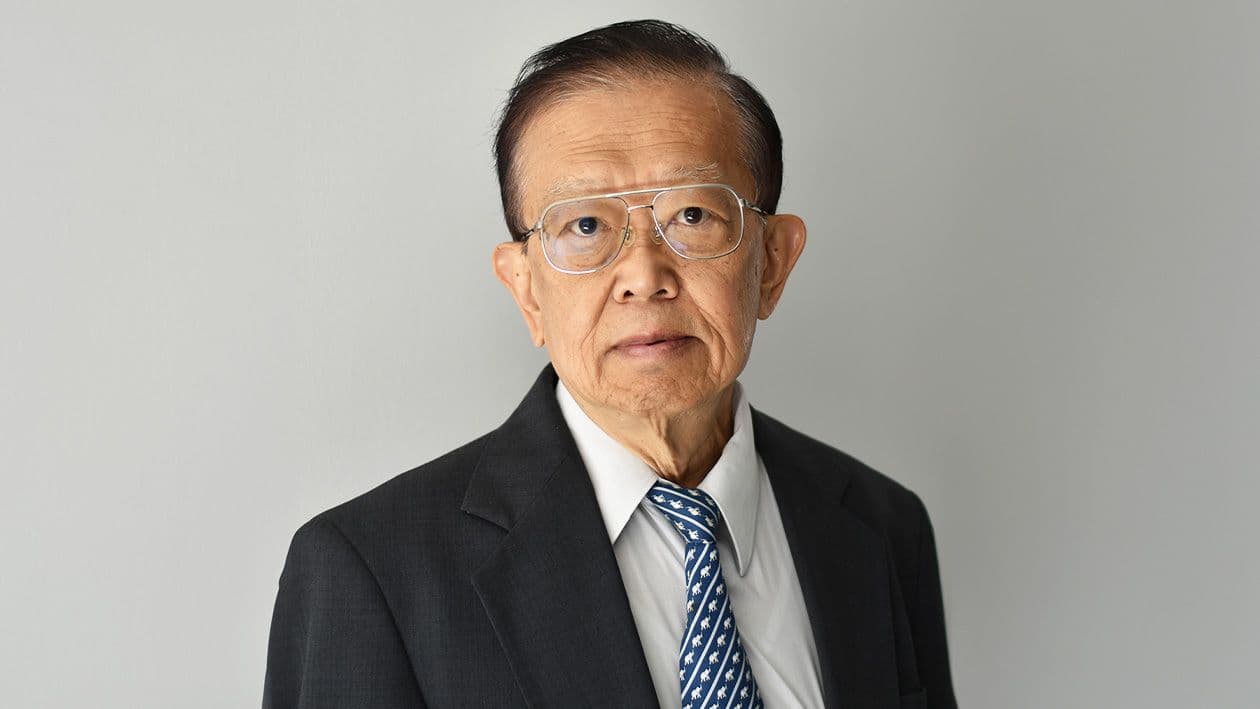National Academy of Engineering recognizes T.C. Chen’s role in semiconductor evolution
In his four decades at IBM Research, T.C. Chen has played a central role in the qualification of generation after generation of semiconductor technologies.
If you’re reading this on a smartphone, you’re most likely using at least five of Tze-Chiang (T.C.) Chen’s semiconductor process patents for transceivers and processors.
Those are just some of Chen’s more than 125 patents he has been awarded. Chen, IBM Fellow and vice president of science and technology at IBM Research, has left an indelible mark on the world of microelectronics during his four decades at IBM. In recognition of a career spent advancing the evolution of semiconductor technology, Chen has been elected to the U.S. National Academy of Engineering.
Chen has worked at IBM since 1984, and at IBM Research continuously since 2003. He was one of the first group of distinguished engineers in 1996. Throughout his entire career, he has led the research, development, and manufacturing of all the semiconductor devices used in IBM systems, including bipolar devices, DRAM, and CMOS, among others.
We spoke with Chen to reflect on his career, the semiconductor field, and his most recent honor.
The following interview has been edited for clarity and brevity.
What was your reaction when you found out you’d been elected to the NAE?
It was unexpected, and I feel great honor. I’ve been at IBM for 40 years, and I give my thanks to IBM for giving me the opportunity to participate in the evolution of semiconductors.
You were elected to the NAE, “For technical contributions and leadership in materials development and the implementation of logic and memory technologies.” What parts of your research are you most proud of?
I would say the first half of my career, when I was at IBM Microelectronics, my greatest contributions were all the semiconductor technologies for IBM server system use: bipolar devices, DRAM, CMOS, and high-K metal gate. Over my 25 years at IBM Research, I’ve been continuously involved, with no interruption. In 2003 I became VP of science and technology. In that role, I wasn’t the initiator of quantum computing [at IBM], but I was the vice president who first sponsored the superconducting qubit, a program that has grown from just a few people to thousands of people. Early on in 2003, we only had two or three people working on this. I soon realized how important it was going to be, so I sponsored the superconducting qubit research and secured funding for it. And today, IBM is number one by far in quantum computing hardware. I also took the initiative to support and oversee the development of early AI hardware, which has now led to Telum II in the latest Z system.
What are some of the most surprising changes you’ve seen in the field during your career?
In my career, I’ve seen semiconductors scale down a surprising amount. When I started working, the minimum dimension of semiconductors was 2.5 microns. Today, it’s 21 nanometers. It shrank over 100 times!
What most excites you about the future of semiconductors?
The most exciting thing to me is how semiconductors today are becoming like petroleum oil for industry. Semiconductor technology drives just about all electronic devices — your mobile phone is full of semiconductors, same as your laptop computers and just about everything.
I was recently visiting a hospital, and all the different diagnostic devices they use are full of semiconductors. Just like petroleum products drive cars and everything, semiconductors are also becoming essential, just like air and water.
What are the biggest unknowns that remain?
All things come to an end. When we shrink all these devices, we can only shrink them so far. One nanometer is 10 Angstroms, and an Angstrom is the size of an atom. So we are approaching the atomic limit. Humans can conquer all those issues, but the most important question is, “At what cost?” If your phone cost $10,000 you probably wouldn’t buy it, right?
Technology sounds unlimited, but the cost is going to be a big issue.
Related posts
- NewsPeter Hess
IBM’s software engineering agent tops the Multi-SWE-bench leaderboard for Java
NewsPeter HessIt takes a village to make open infrastructure for AI a reality
NewsPeter HessExpanding AI model training and inference for the open-source community
NewsPeter Hess
